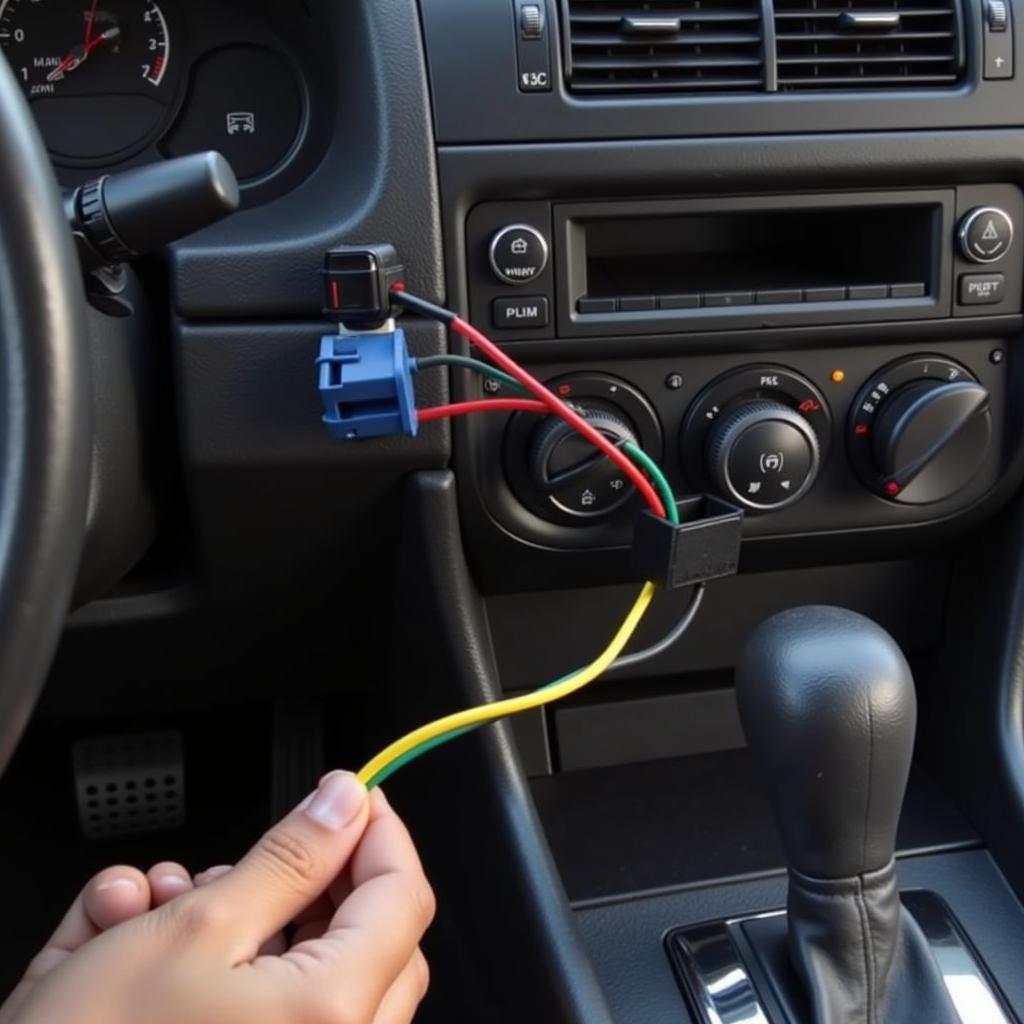Metromile battery drain can be a frustrating issue, leaving you stranded and unsure of the cause. This article dives deep into the common reasons behind this problem and provides practical solutions, ranging from simple DIY fixes to more advanced diagnostic approaches. We’ll equip you with the knowledge to identify the culprit and get your car back on the road.
Understanding the Causes of Metromile Battery Drain
Several factors can contribute to excessive battery drain in vehicles insured with Metromile, a pay-per-mile insurance provider that uses a device to track mileage. While the Metromile device itself uses minimal power, other issues can arise. Let’s explore some of the most common culprits.
Parasitic Draw: The Silent Battery Killer
One of the most frequent causes of battery drain is parasitic draw, which refers to the electrical current that continues to flow even when the car is off. This can be caused by faulty components, such as interior lights, glove box lights, or even a malfunctioning radio.
Faulty Alternator: Not Charging Properly
A faulty alternator can also lead to battery drain. The alternator is responsible for recharging the battery while the engine is running. If it’s not functioning correctly, the battery won’t receive the necessary charge, eventually leading to depletion.
Extreme Temperatures: Impact on Battery Performance
Extreme temperatures, both hot and cold, can significantly impact battery performance. In cold weather, the battery’s chemical reactions slow down, reducing its capacity. Conversely, excessive heat can accelerate evaporation of the battery fluid, leading to damage and reduced lifespan.
Old or Weak Battery: Reaching the End of Its Life
Sometimes, the simplest explanation is the correct one. An old or weak battery might simply be reaching the end of its lifespan. Batteries typically last between three to five years, and their performance degrades over time.
Diagnosing Metromile Battery Drain
Identifying the root cause of the battery drain is crucial for effective troubleshooting. Here’s a step-by-step guide to help you diagnose the issue.
- Check for Obvious Signs: Look for interior lights that remain on, even when the car is off. Also, listen for any unusual sounds, like a faint buzzing or clicking, which could indicate a parasitic draw.
- Perform a Parasitic Draw Test: This involves using a multimeter to measure the current draw when the car is off. A reading higher than 50 milliamps suggests a potential parasitic draw.
- Test the Alternator: Use a multimeter to check the alternator’s voltage output. A reading between 13.5 and 14.5 volts indicates a healthy alternator.
- Inspect the Battery: Check the battery for any signs of physical damage, such as cracks or leaks. Also, consider having the battery tested at a local auto parts store to determine its overall health.
Solutions to Metromile Battery Drain Issues
Once you’ve identified the cause of the battery drain, you can implement the appropriate solution.
Addressing Parasitic Draw: Identifying and Disconnecting the Culprit
If a parasitic draw is detected, systematically disconnect fuses one by one while monitoring the multimeter reading. When the current draw drops significantly, you’ve likely identified the circuit causing the issue.
Replacing a Faulty Alternator: Restoring Charging Capacity
A faulty alternator needs to be replaced. This is typically a straightforward procedure, but it’s best to have it done by a qualified mechanic.
Dealing with Extreme Temperatures: Protecting Your Battery
In extreme temperatures, consider using a battery warmer in cold weather or parking in a shaded area during hot weather to protect the battery.
Replacing an Old Battery: Starting Fresh
If the battery is old or weak, replacing it is the best solution. Choose a battery with the correct specifications for your vehicle.
“Regular battery maintenance is essential for preventing drain issues,” says automotive electrical expert, David Miller, from Automotive Electronics Solutions. “This includes cleaning the battery terminals and checking the electrolyte levels.”
Conclusion
Metromile battery drain can be a nuisance, but with the right knowledge and tools, you can effectively diagnose and resolve the issue. By understanding the common causes and implementing the appropriate solutions, you can keep your car running smoothly and avoid unexpected breakdowns. Remember to perform regular battery maintenance and consult a qualified mechanic if you encounter complex problems. Don’t let a dead battery derail your journey.
FAQ
- Does the Metromile device itself drain the car battery? The Metromile device uses minimal power and is not typically the primary cause of battery drain.
- How can I test my car battery’s health? You can have your battery tested at most auto parts stores. They can determine its charge level and overall condition.
- What is a parasitic draw? A parasitic draw is a small amount of current that continues to flow even when the car is off, potentially draining the battery.
- How long does a car battery typically last? Car batteries usually last between three to five years, depending on usage and environmental factors.
- Can extreme temperatures affect my car battery? Yes, both extreme heat and cold can negatively impact battery performance and lifespan.
- How can I prevent battery drain issues? Regular maintenance, such as cleaning terminals and checking fluid levels, can help prevent battery drain.
- Should I disconnect the Metromile device if I suspect it’s draining my battery? Before disconnecting the device, consult Metromile support. Disconnecting it may affect your insurance coverage.

